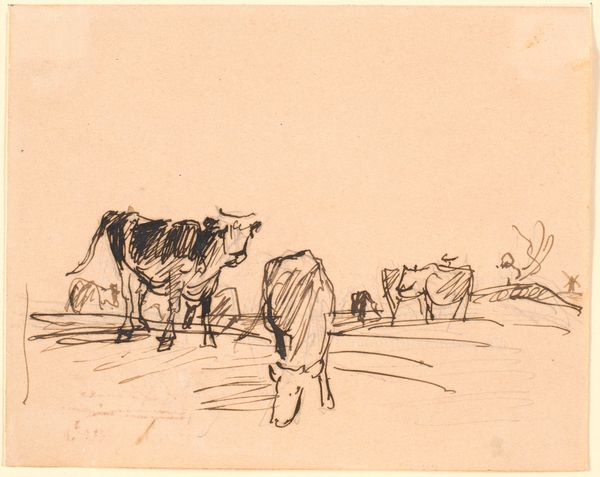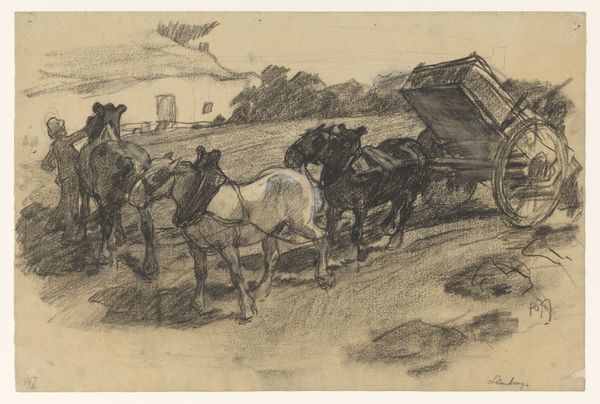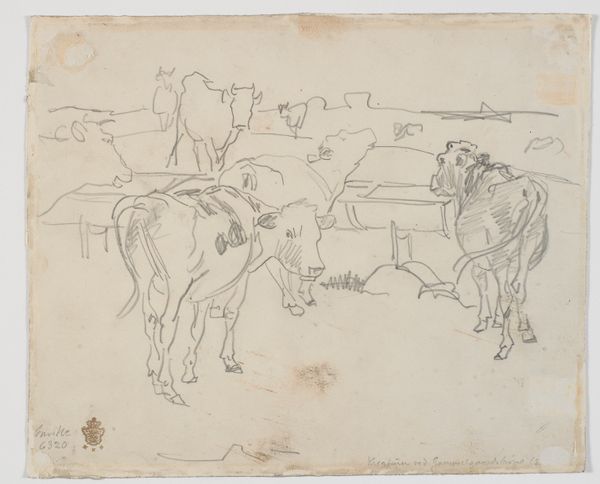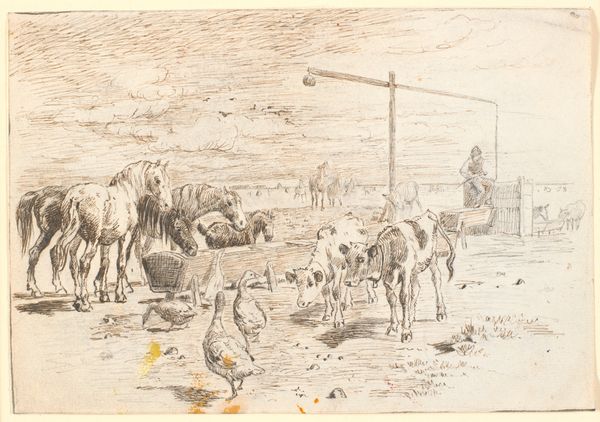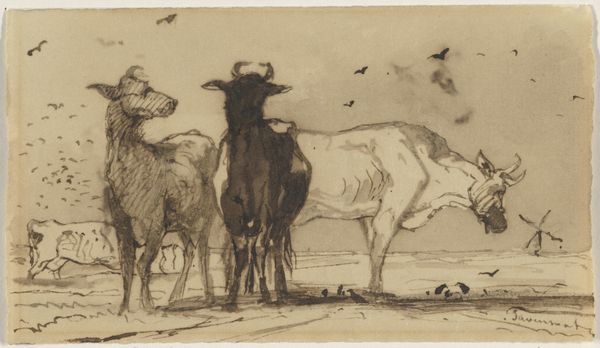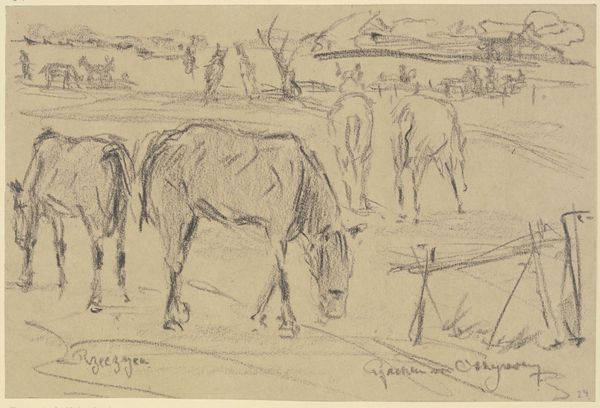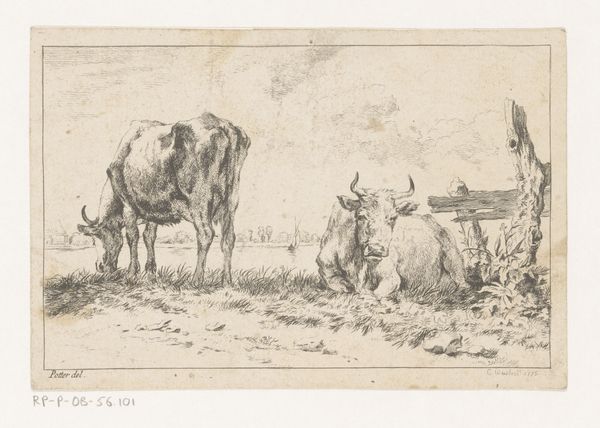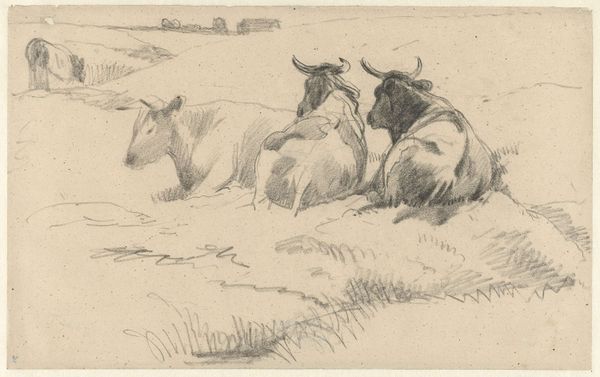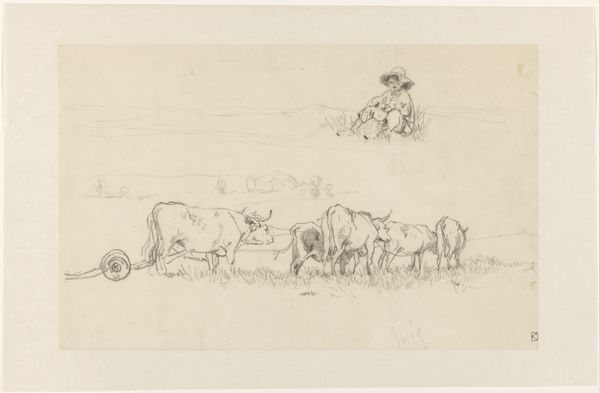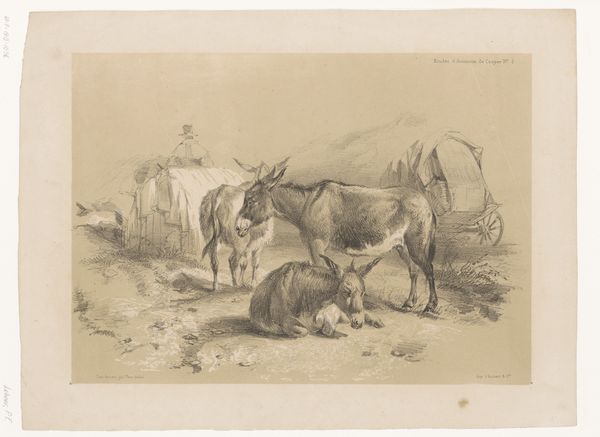
drawing, ink, pencil
#
drawing
#
ink drawing
#
landscape
#
ink
#
pencil
#
genre-painting
#
realism
Dimensions: 210 mm (height) x 255 mm (width) (bladmaal)
Editor: Here we have "Cows by the Old Farm Well," an 1891 drawing in ink and pencil by Theodor Philipsen. I’m immediately struck by the simplicity of the scene. It feels so familiar, so…Danish somehow. What do you see in this piece, particularly concerning its cultural meaning? Curator: The enduring symbol of the cow carries a rich, surprisingly ambivalent weight. On one hand, we have the idyllic pastoral, the connection to nature and simple, honest living. The well anchors the composition, promising community, and prosperity through life-giving water. Editor: And the ambivalence? Curator: Consider the cow itself, rendered with such stark lines, bordering on industrial. It’s an animal whose cultural function has shifted: from provider and companion to product. Are we meant to reflect on lost connection to the land or appreciate productivity gains? Editor: The way the cows cluster around the trough does make it look less like a calm watering hole and more like a feedlot. A change from earlier depictions of livestock. Curator: Exactly! The visual tension invites us to consider changing times. What memories, positive or negative, do the images of cows and wells bring to mind for a viewer of the 1890s, compared to today? Consider that Philipsen was part of the Skagen group, which were highly attuned to light and rural life. The lines in this artwork aren't simply lines, they suggest meaning of Danish life at the end of the 19th Century. Editor: I never considered how such an everyday scene could hold so many layers of meaning, contrasting interpretations over time, especially the cow's role in Danish culture! Thanks! Curator: My pleasure! Every line and shadow offers another opportunity to unlock history’s symbols.
Comments
No comments
Be the first to comment and join the conversation on the ultimate creative platform.
